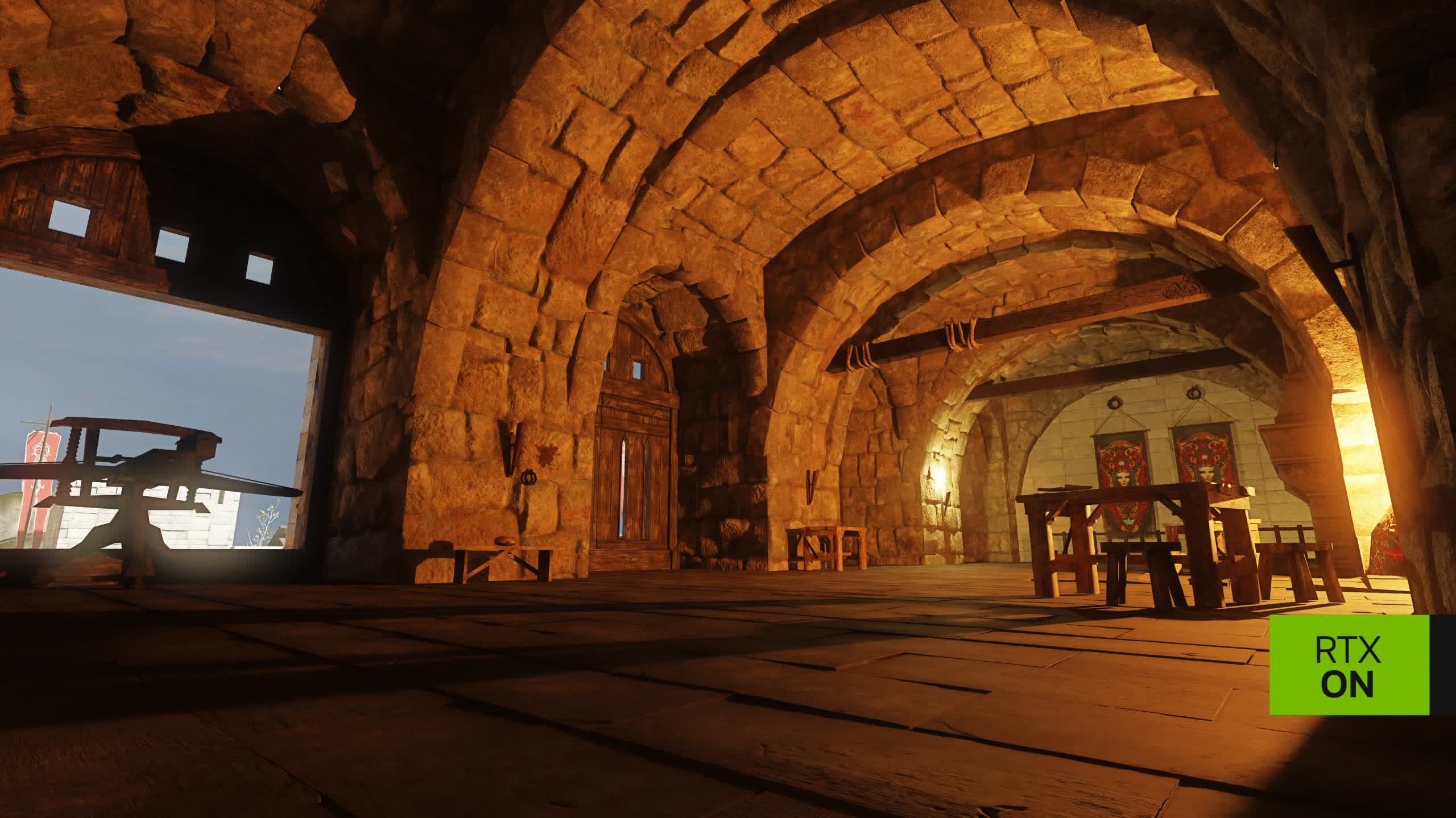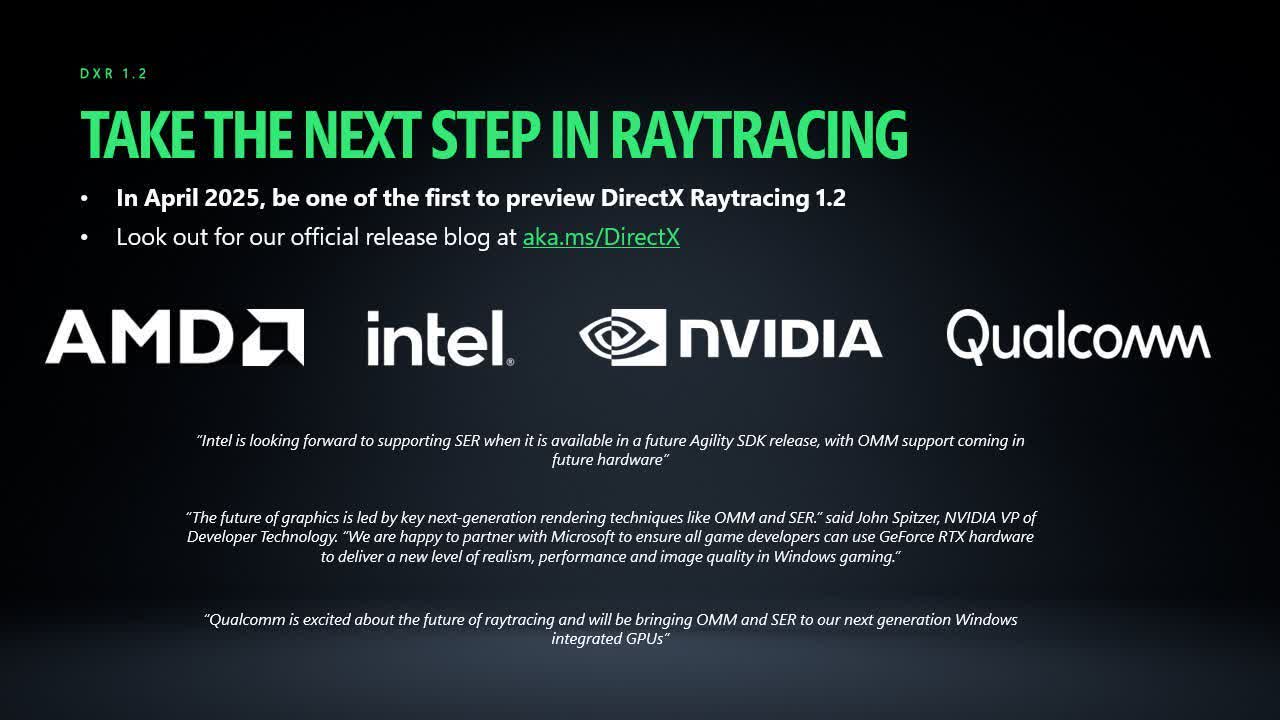Forward-looking: Recent big game releases appear to confirm that ray tracing and path tracing are the future of graphics rendering. However, these techniques remain prohibitively computationally expensive. The next major update to Microsoft's DirectX API aims to address this and facilitate broader adoption of the technology.

Microsoft's GDC presentation this week offered a glimpse into the future of DirectX ray tracing support. The company claims that DirectX Raytracing 1.2 could help developers double the performance of ray tracing and path tracing.
Two key features underpin the update: opacity micromaps (OMM) and shader execution reordering (SER). OMM can help path-traced games run up to 2.3 times faster by reducing shader invocations and optimizing opacity data to enhance rendering efficiency. Meanwhile, SER intelligently groups shader execution to minimize divergence, improving performance by up to 2 times.

Although ray tracing first emerged as a flashy extra feature in games like Battlefield V and Cyberpunk 2077, recent titles have made it mandatory, indicating that it will soon become standard. Examples include Star Wars Outlaws, Indiana Jones and the Great Circle, and Assassin's Creed Shadows.
Path tracing is a more advanced form of ray tracing that significantly improves the accuracy of dynamic lighting and shadows but comes with substantial performance costs. It typically requires high-end GPUs to run effectively in games such as Cyberpunk 2077, Alan Wake 2, Black Myth: Wukong, Indiana Jones and the Great Circle, and the recently released Half-Life 2 RTX demo. Doom: The Dark Ages, launching in May, will also require ray tracing and offer optional path tracing.
Also see: Path Tracing vs. Ray Tracing, Explained
DirectX Raytracing 1.2 will become available to developers starting next month. As a result, ray tracing and path tracing could become significantly less demanding in new games over the next few years. Unsurprisingly, Nvidia's RTX graphics cards will support the API update first, while Microsoft is collaborating with AMD, Intel, and Qualcomm to expand support.
Microsoft also shared more details on cooperative vectors and neural rendering, which aim to integrate AI workloads into real-time graphics rendering. A new foundational feature, Neural Block Texture Compression, significantly reduces memory usage – potentially benefiting users with GPUs that have 12 GB of VRAM or less. Additionally, neural supersampling and denoising are expected to enhance image quality in path-traced games.
DirectX neural rendering and cooperative vector support first appeared in January. Microsoft explained that neural rendering optimizes matrix-vector operations for AI training and enables smaller neural networks to run efficiently during GPU shading processes.
Microsoft DirectX Raytracing 1.2 update promises to boost game performance significantly